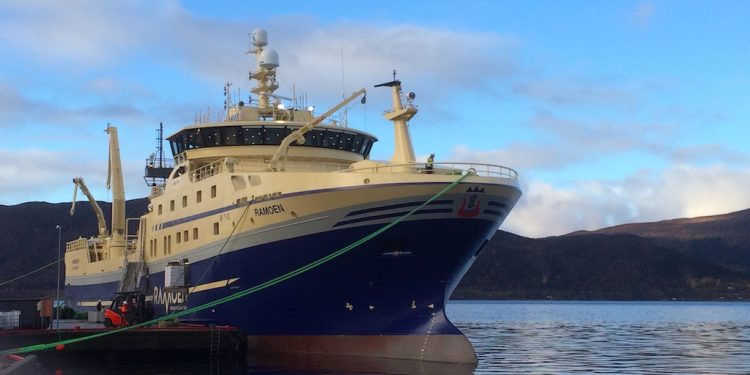The landed value of fish and shellfish delivered by the Norwegian fishing fleet in 2021 was NoK23.9 billion, and taking into account adjustments for inflation, this represents a 60% increase over a twenty-year period.
The findings appear in a new report commissioned by the Norwegian Seafood Research Fund (FHF) and presented by Nofima and Menon. It traces changes within the industry and examines how values are distributed.
In 2021, the Norwegian fleet landed 2,590,000 tons of fish and shellfish, a slight decrease from 2,620,000 tonnes and although this is a drop in volume, there’s a 4.50% increase in value in an industry that in 2021 employed just 18,800 people.
‘Even with structuring and fewer vessels, fisheries are still of great importance regarding settlement and business development in many municipalities,’ said Nofima scientist Audun Iversen.
In 2021, fisheries resulted in a net value creation of NoK21.4 billion.
‘Value creation in the fishing fleet was NoK13.8 billion, while NoK7.6 billion of the value creation was ripple effects in the fleet’s suppliers,’ commented Nofima project manager Roy Robertsen.
Direct value creation in fisheries is divided into 46% as remuneration to fishermen, 45% as profit to capital owners and 9% as tax to the state, counties and municipalities.
The total effects of taxation in 2021 amount to approximately NoK5.8 billion.
Researchers have calculated that approximately NoK4.9 billion of this goes to the state as tax payments, while approximately NoK720 million goes to the municipalities.
The number of vessels has remained relatively stable at 6000 in recent years, but decreased in 2021 to 5600. Much of the fleet continues to be made up of small vessels under 11 metres in length. These constitute 80% of the fishing fleet, but an increasing proportion of the catch is taken by larger vessels.
Structuring within the fishing fleet has meant that quotas are distributed between fewer vessels, which in turn leads to the construction of new and larger vessels.
‘Changes in fleet structure and new construction also lead to changes in the ripple effects, both in the composition of what is purchased and geographical changes,’ added Nofima’s Thomas Nyrud.









